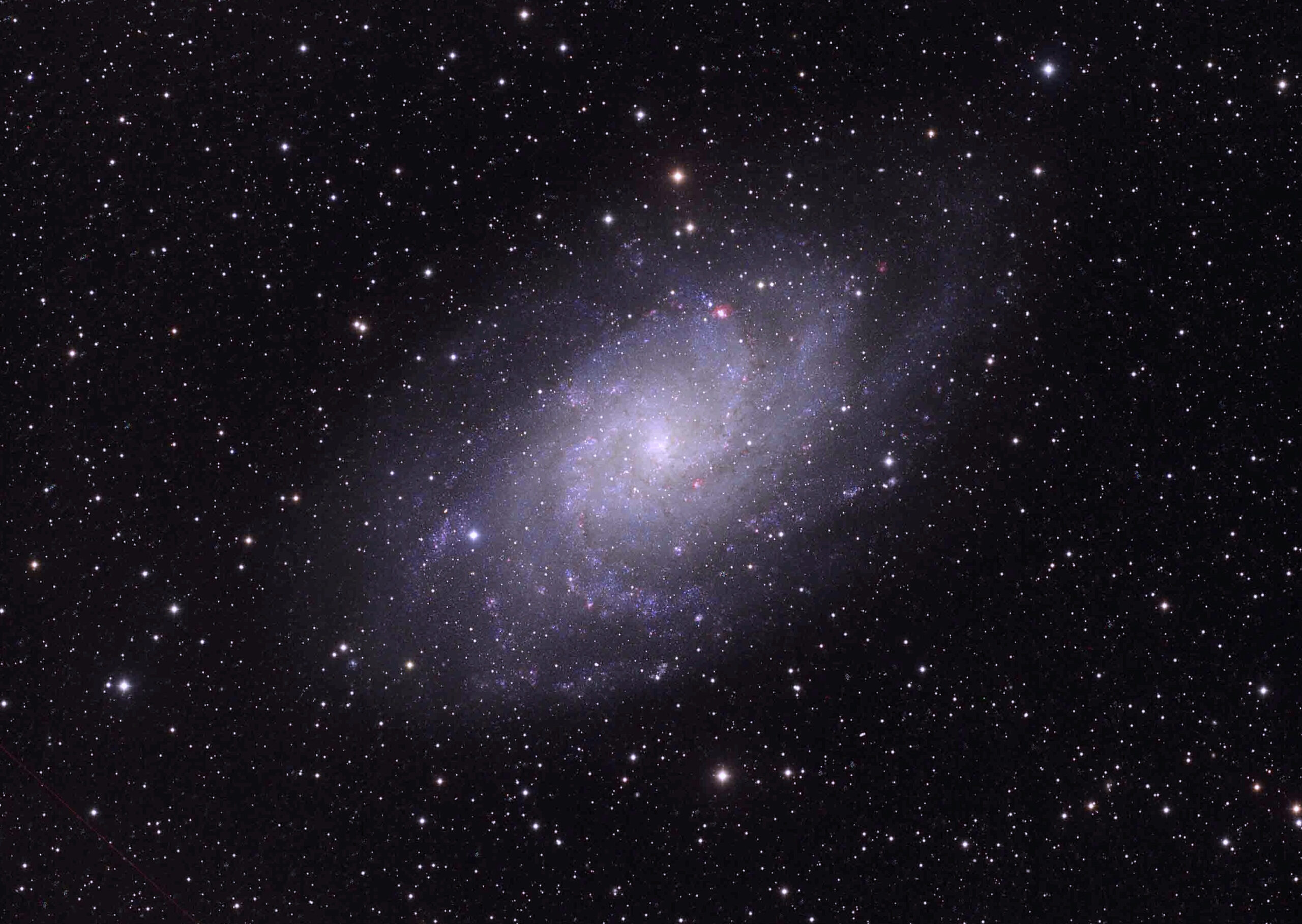Galaxies are enormous islands of billions of stars. Astronomers estimate that there are hundreds of billions of them in the visible universe. Edwin Hubble was the first to realize the true nature of galaxies in the 1920s, and he came up with a classification system that is still in use today. This system divides galaxies into three major groups (elliptical, spiral, and irregular), with several subdivisions under each of these three categories.
This image of the Triangulum or "Pinwheel" galaxy M33 in the constellation Triangulum is an example of a spiral galaxy. Since the spiral arms are more prominent than the nucleus, it is classified as an "Sc" spiral galaxy (in Sa spirals the nucleus is dominant, and in Sb spirals the nucleus and arms are of equal prominence).
M33 is a nearby galaxy in what astronomers call our "local group" of 60 or so neighboring galaxies. It is 2.6 million light years away, and has 40 billion stars. It is an enormous object, spread out over an angular area equal to four full moons! Yet, I had difficulty finding it in a 20" telescope because it is so faint. It has what astronomers call a "low surface brightness," which occurs with large objects whose visible light is dispersed over a large area. It is best seen at lower powers under dark skies. Of course, with a CCD camera, the dim light from this object can be seen in seconds.
This image represents a total exposure of 10 hours taken when the galaxy was near zenith (straight overhead), which reduces the blurring effect of the atmosphere.
M33 is perhaps the most famous example of a "face-on" spiral galaxy, meaning that we are seeing it like a wheel moving past us (instead of toward or away from us, as in the case of an "edge-on" spiral).
The Pinwheel Galaxy in Triangulum (M33)
Date Taken:October 11, 2015
Location Taken:Deep Sky West Observatory near Rowe, New Mexico (7,500' elevation)
Conditions of Location: Equipment Used:Takahashi FSQ-106 apochromatic refractor, Paramount ME mount, SBIG STL11000 CCD camera, Astrodon LRGB filters
Processing Used:10 hours of LRGB images, taken over several nights, and processed with Pixinsight and Photoshop
Distance from Location:2.6 million light years (one light year is 6 trillion miles)
Constellation:Triangulum
Other Link:
